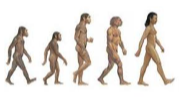- Escambia County Public Schools
- Biology End of Course Review
- SC.912.L.15.1 Evolution
Science
Page Navigation
- Home
- Elementary Science Curriculum
-
Biology End of Course Review
- Biology EOC Review
- SC.912.N.1.1 Scientific Method
- SC.912.L.18.12 Properties of Water
- SC.912.l.18.9 Photosynthesis and Cellular Respiration
- SC.912.L.18.1 Macromolecules
- SC.912.L.16.17 Mitosis and Meiosis
- SC.912.L.16.3 DNA Replication
- SC.912.L.14.3 Cell Structure
- SC.912.L.14.1 Cell Theory
- SC.912.L.17.20 Human Impact
- SC.912.L.17.9 Food Webs and Energy Transfer
- SC.912.L.17.5 Population Size
- SC.912.L.16.13 Reproductive System
- SC.912.L.16.10 Biotechnology
- SC.912.L.14.52 Immune System
- SC.912.L.14.36 Cardiovascular System
- SC.912.L.14.26 The Brain
- SC.912.L.14.7 Plant Structure
- SC.912.L.16.1 Genetics
- SC.912.L.15.13 Natural Selection
- SC.912.L.15.8 Origin of Life
- SC.912.l.15.6 Classification
- SC.912.L.15.1 Evolution
SC.912.L.15.1 Evolution
ORGANISMS, POPULATIONS AND ECOSYSTEMS
CLASSIFICATION, HEREDITY AND EVOLUTION
WHAT YOU NEED TO KNOW
-
- You need to know how the theory of evolution is supported by evidence from the fossil record, comparative anatomy, comparative embryology, biogeography, molecular biology, and observed evolutionary change.
- You need to know trends in hominid evolution from early ancestors to modern humans including brain size, jaw size, language and manufacture of tools.
- This benchmark will be assessed together with nature of science benchmarks. You will need to draw scientific conclusions based on the evidence or scenario given.
- You need to know the differences between a theory and a law and know how a theory is developed over time.
- You need to know how specific scientists (Darwin, Lyell, Malthus, Mendel, Wallace) contributed to the theory of evolution.
EXAMPLE ONE
-
The scientific theory of evolution is supported by different types of evidence. The diagrams below show the skeletons of two different animal species. How does comparing the skeletons of these animals provide support for the scientific theory of evolution?
A. It provides information about the organisms' habitats.
B. It shows possible common ancestry between organisms.
C. It provides information to determine the organisms' ages.
D. It shows possible chromosomal similarities between organisms.
EXAMPLE TWO
-
According to fossil records, the horses that lived 50 million years ago were much smaller, weaker and slower than modern horses. Which process is most likely responsible for the changes that have led to the increased size, strength, and speed in horses?
A. commensalism
B. inbreeding
C. migration
D. evolution by natural selection
EXAMPLE THREE
-
The diagram illustrates an embryonic stage of two organisms.
Which of the following can be determined by observing the embryos shown in the diagram?
A. The organisms share a common ancestry.
B. The organisms belong to the same genus.
C. The organisms are native to the same geographic areas.
D. The organisms will grow into anatomically similar adults.
EXAMPLE FOUR
-
Scientists have found evidence that about 2.4 million years ago a gene regulating jaw muscles mutated and may have led to the more graceful human jaw we see today. The diagram below shows the skulls of 3 hominid species.
Which statement below most closely explains the link between jaw size and hominid evolution?
A. The jaws of hominids evolved to be smaller and less protruding over time.
B. The jaws of hominids evolved to be larger and more protruding over time.
C. There appears to be no change in the jaws of hominids over time.
D. The jaws of hominids changed over time due to a change in brain size.
EXAMPLE FIVE
-
Scientists are studying the evolutionary history of a group of plants in the United States, and they developed an evolutionary tree, as shown below.
Which statement can be inferred from the evolutionary tree?
A. Species 1 is most closely related to Species 8.
B. Species 2 is most closely related to Species 3.
C. Species 3 is most closely related to Species 7.
D. Species 5 is most closely related to Species 6.
EXAMPLE SIX
-
Scientists are studying the evolutionary history of a group of plants in the United States, and they developed an evolutionary tree, as shown below.
What information about the organisms best helps the scientists to determine the evolutionary relationships among them?
A. DNA sequences
B. Anatomical features
C. Habitat types
D. Reproductive Strategies
EVIDENCE OF EVOLUTION
BOZEMANSCIENCE - EVIDENCE OF EVOLUTION
KHAN ACADEMY - HUMAN EVOLUTION
EVOLUTION IN TWO MINUTES
IN YOUR BOOK
-
General Biology - Chapter 10, pg. 296
Honors Biology - Chapter 16, pg. 378







